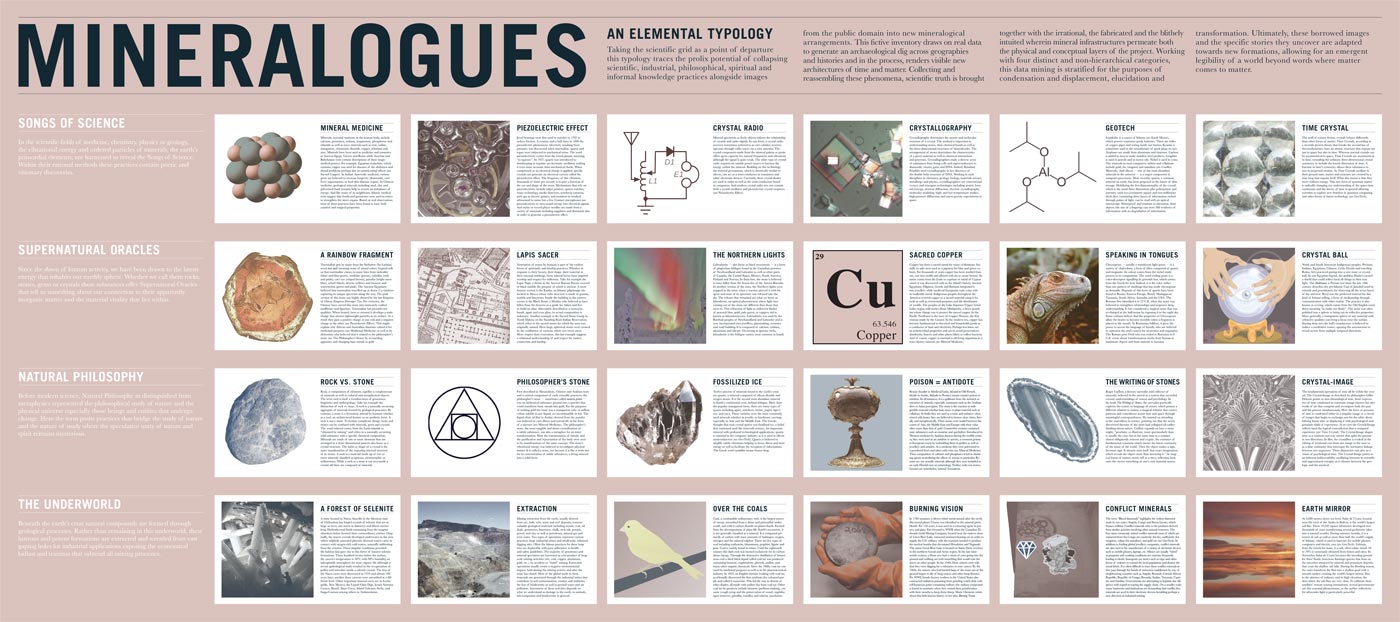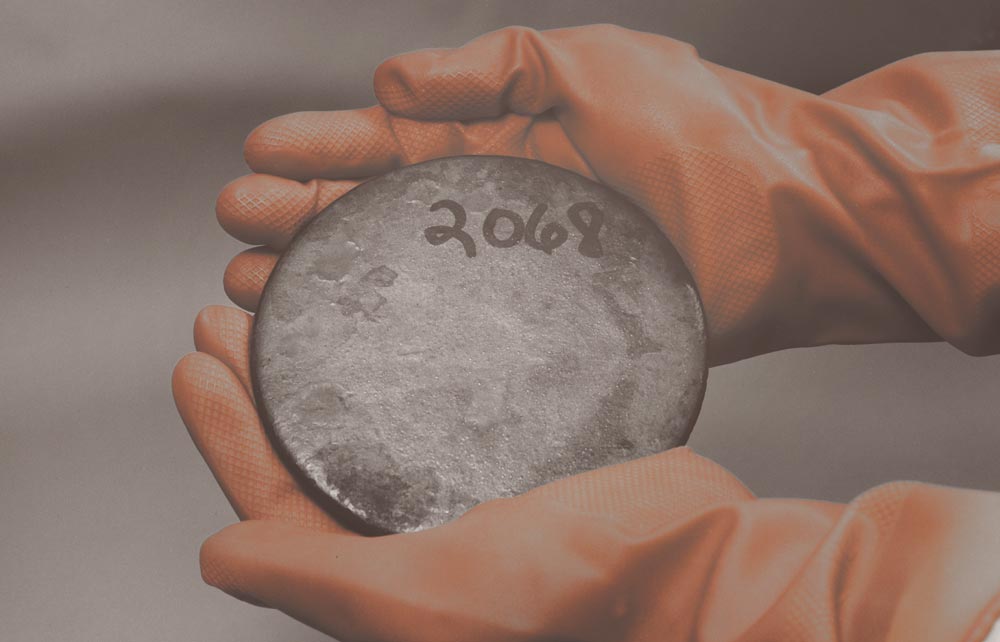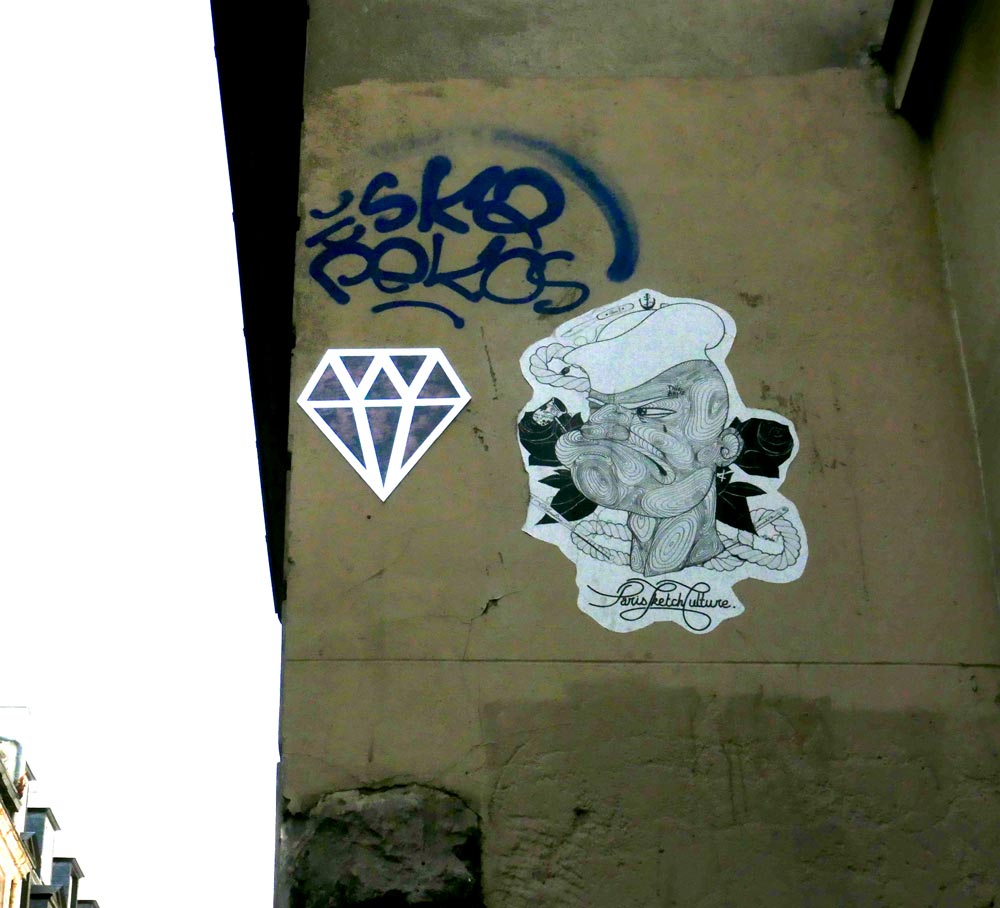
Mineralogues, Randy Lee Cutler, digital print, 40”x90”, 2018 [view .pdf]
Randy
Lee
Cutler
The two works in this exhibition, Rock Album and Mineralogues explore the presence of minerals in our daily environments and their profound but often unacknowledged effect on our experiences.
Mineralogues offers an elemental typology that takes up the scientific grid as a point of departure. It traces the prolix potential of collapsing scientific, industrial, philosophical, spiritual and informal knowledge practices alongside images from the public domain into new mineralogical arrangements. The fictive inventory draws on real data to generate an archaeological dig across diverse geographies and histories and in the process, renders visible new architectures of time and matter. Working with four distinct and non-hierarchical categories (the songs of science, supernatural oracles, natural philosophy and the underworld), this data mining is stratified for the purposes of condensation, displacement and transformation. Ultimately, these borrowed images and the stories they uncover are adapted towards new crystallizations, allowing for an emergent legibility of a world beyond words where matter matters.
Conflict Minerals: The term “Blood diamonds” highlights the violent diamond trade in war zones (Angola, Congo and Sierra Leone), which finance militias. Conflict minerals refer to the products derived from similar activities involving other natural resources. The four most commonly mined conflict minerals most of which are extracted from the Congo are cassiterite (for tin), wolframite (for tungsten), coltan (for tantalum), and gold ore. In addition to feeding global jewellery companies, conflict minerals are also used in the manufacture of a variety of electronic devices such as mobile phones, laptops, etc. Miners are usually “hired” at gunpoint and working conditions are extreme, frequently leading to death. Insurgents use tactics such as rape and other forms of violence to control the local population and destroy the social fabric. It is often difficult to trace these conflict minerals as they pass through the hands of numerous middlemen by way of neighbouring countries such as Angola, Burundi, Central African Republic, Republic of Congo, Rwanda, Sudan, Tanzania, Uganda, and Zambia. Governments are attempting to legislate due diligence with regard to tracing the supply chain. On a smaller scale, many businesses and institutions are demanding that conflict free minerals are used in their electronic devices heralding perhaps a new direction in industrial mining.

Uranium, 2020 (Public Domain/Wikipedia)
Burning Vision: In 1789 uranium, a silvery-white metal named after the newly discovered planet Uranus was identified in the mineral pitchblende. For 150 years, it was used as a colouring agent in pottery and glass. Fast forward to WWII when the Canadian Eldorado Gold Mining Company, located near the eastern shore of Great Bear Lake, extracted uranium-bearing ore in order to supply the U.S. military with the uranium needed to produce the nuclear bombs that devastated Hiroshima and Nagasaki. Great Bear Lake is located on Sahtu Dene territory in the northern boreal and Arctic region. In the late nineteenth century, a Dene seer had a vision of men going into the ground and walking out with something that would rain fire down on other people. In the 1940s Dene miners were told that they were digging for a substance to cure cancer. By the 1960s, the miners who had hauled bags of the stone out of the ground began to die of lung cancer and other lung diseases. Pre-WWI, female factory workers in the United States also contracted radiation poisoning from painting watch dials with self-luminous paint containing radium (the radium compound is found in uranium) when they wetted their paint brushes with their mouths to keep them sharp. Marie Clements writes about this little-known history in her play Burning Vision, 2003.
Rock Album, commissioned by the Biennale of Sydney NIRIN 2020 includes 12 tracks that rework some of the Mineralogues texts into a sound work accompanied by ambient sounds and textures. It also explores ideas of Deep Time, minerals mined in Canada and a poetic encounter with these specimens. Both artworks represent a geological dig across a physical-metaphorical spectrum connecting and rupturing familiar meanings and assumptions. This faceted approach encourages science-fictional encounters from the past, present and future to better contemplate our human interactions with these earthly deposits.
Randy Lee Cutler is an interdisciplinary artist whose practice weaves together themes of collaboration, ecology, materiality, science and fiction. Taking the form of walks, performance, collage, printed matter, installation, video, audio and creative writing, she has produced numerous hybrid projects that engage with conversation and research. Exhibitions and performances include the Biennale of Sydney NIRIN 2020, Belkin Art Gallery, Vancouver Art Gallery, 7a*11d International Performance Art Festival and Visualeyez Festival of Performance Art, among others. She has published An Elemental Typology, an artist book exploring the cultural configurations of minerals in philosophy, mining, science and spirituality, as well as an ebook Open Wide: An Abecedarium for the Great Digestive System (2014) available on itunes. Her current research, a SSHRC Insight–funded project called Leaning out of Windows: Art and Physics Collaborations through Aesthetic Transformations, explores how artists and scientists work together to develop a shared understanding of knowledge and how it is translated across their disciplinary communities. Randy is a professor at Emily Carr University in the Faculty of Art on the unceded Coast Salish territories also known as Vancouver, Canada.
Randy will be leading a writing workshop, Listening to the Stones, Sun Jun 20, 1pm, as a part of Overburden programming.
Kootenay Gallery of Art
120 Heritage Way
Castlegar, BC V1N 4M5
kootenaygallery[dot]telus.net
250-365-3337
Oxygen Art Centre
#3-320 Vernon St. (alley entrance)
Nelson, B.C. V1L4E4
info[dot]oxygenartcentre.org
250-352-6322
We acknowledge with gratitude that our galleries are located on the unceded traditional territory of the sn̓ʕay̓ckstx Sinixt Arrow Lakes and Yaqan Nukij Lower Kootenay Band peoples in Nelson and the unceded traditional territory of the sn̓ʕay̓ckstx Sinixt Arrow Lakes in Castlegar. We would like to thank the Sinixt, Yaqan Nukiy Ktunaxa, and the many diverse Indigenous and Métis people who live here now for the opportunity to live, work and host cultural experiences within this beautiful watershed.
